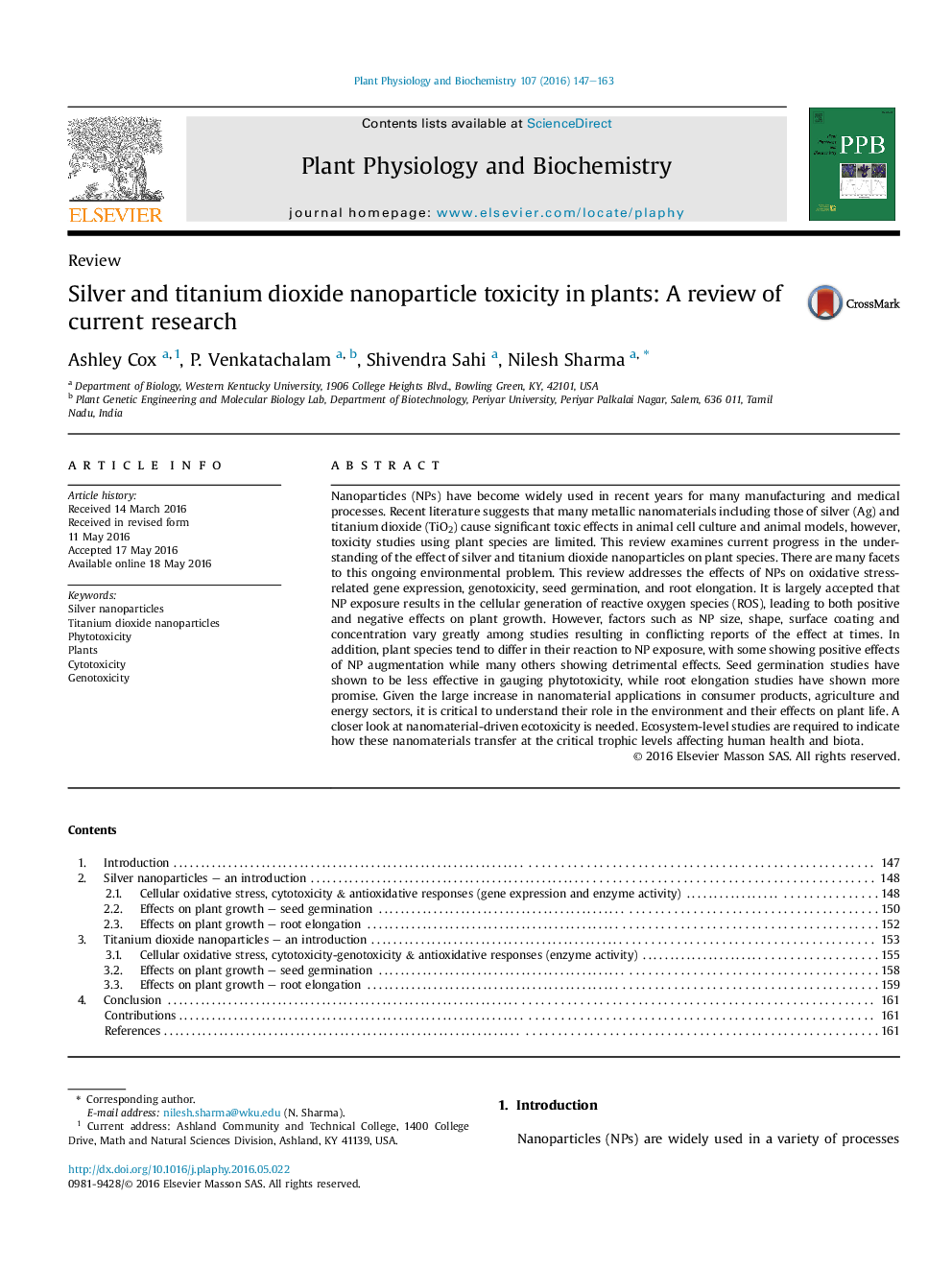| کد مقاله | کد نشریه | سال انتشار | مقاله انگلیسی | نسخه تمام متن |
|---|---|---|---|---|
| 2014660 | 1541914 | 2016 | 17 صفحه PDF | دانلود رایگان |
• Phytotoxicity is influenced by several factors, including but not limited to NP size, shape, coating, use of carrier, genotypes and experimental methods.
• Silver and titanium dioxide nanoparticles both affect germination, growth and photosynthetic efficiency in multiple ways, inducing oxidative stress, cytotoxicity and/or genotoxicity.
• AgNPs appear to exhibit more toxic effects in multiple species, whereas TiO2NPs show some beneficial effects as well.
• In view of rapidly increasing applications of engineered nanomaterials, it is necessary to carry out toxicity studies at organismal and ecosystem levels. In vitro studies do not appropriately reflect effects at the whole organism-level.
Nanoparticles (NPs) have become widely used in recent years for many manufacturing and medical processes. Recent literature suggests that many metallic nanomaterials including those of silver (Ag) and titanium dioxide (TiO2) cause significant toxic effects in animal cell culture and animal models, however, toxicity studies using plant species are limited. This review examines current progress in the understanding of the effect of silver and titanium dioxide nanoparticles on plant species. There are many facets to this ongoing environmental problem. This review addresses the effects of NPs on oxidative stress-related gene expression, genotoxicity, seed germination, and root elongation. It is largely accepted that NP exposure results in the cellular generation of reactive oxygen species (ROS), leading to both positive and negative effects on plant growth. However, factors such as NP size, shape, surface coating and concentration vary greatly among studies resulting in conflicting reports of the effect at times. In addition, plant species tend to differ in their reaction to NP exposure, with some showing positive effects of NP augmentation while many others showing detrimental effects. Seed germination studies have shown to be less effective in gauging phytotoxicity, while root elongation studies have shown more promise. Given the large increase in nanomaterial applications in consumer products, agriculture and energy sectors, it is critical to understand their role in the environment and their effects on plant life. A closer look at nanomaterial-driven ecotoxicity is needed. Ecosystem-level studies are required to indicate how these nanomaterials transfer at the critical trophic levels affecting human health and biota.
Journal: Plant Physiology and Biochemistry - Volume 107, October 2016, Pages 147–163
